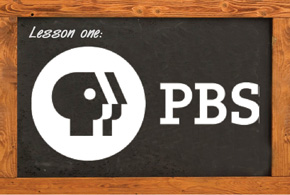Managing and sharing documents and other digital media assets is a mounting challenge for organizations large and small. In many cases, there’s a need to tackle everything from storage and collaboration to issues revolving around digital asset management. Of course, the increasingly rich and complex nature of today’s media further complicates an already difficult and potentially time-consuming task.
At the Public Broadcasting Service (PBS), the desire to streamline enterprise information management (EIM) prompted the television network to adopt a far more sophisticated approach. PBS, which oversees 354 member stations across the United States, recently turned to OpenText Media Management to boost its digital asset management capabilities.
“We are attempting to deal with the effective management, ingestion and distribution of a large number and wide variety of assets for many different departments at PBS,” explains Chris Contakes, vice president of information technology. What’s more, collaboration spans internal and external stakeholders, including “PBS staff, member station staff and non-PBS staff, such as producers and agencies,” he notes.
Over the years, PBS has relied on older tools such as FTP sites, external hard drives and tape backups to store, manage and share files. “Besides the challenges related to managing content in disparate ways, we were looking for a better way to deal with metadata associated with the assets,” Contakes points out.
“The [digital asset management] solution combines the assets and processes into a single system capable of maintaining critical metadata. This will ultimately help users find and manage assets more effectively.”
To better understand how the new technology would affect and change existing processes, PBS started by conducting a 120-day pilot program with a limited number of users. One benefit that Contakes identified immediately was an ability to assign specific end users to deliverables, while using timelines that provide deep visibility into PBS processes.
“The system offers a digital asset management solution to oversee assets as deliverables with assignments and due dates,” he notes. Ultimately, it helps PBS executives better understand promotional and programming timelines.
The EIM software also provides different workflows and views depending on an end user’s role. “The simplest workflow will include a rich faceted search interface to search for an asset,” Contakes explains. “A more advanced workflow will include a layer of business process management (BPM) wrapped around the flow. This allows a producer to approve an asset— videos for TV, audio for radio spots, images and text documents—as a user drops it into the system. It’s then available across multiple channels and media platforms.
A dashboard assists with scheduling and asset management. “We see BPM as one of the critical tools to move our operations forward,” he says.
The initial phase of the rollout—which will involve tens of thousands of users—will focus on the PBS marketing and communications department. Over the coming months, the network will roll out the capabilities across the organization.
Contakes says that the biggest benefit is easier and better asset management. “We no longer have to hunt and peck for an asset,” he says. “An FTP server is no longer realistic for efficient business operations. … Now, we can build applications in an agile fashion to support a rapidly evolving media business.”









